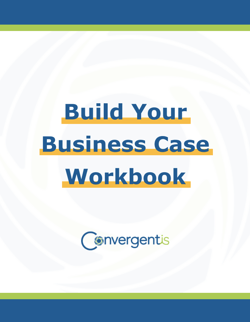Procurement is a critical function in the business. Unfortunately, it is often the most overlooked. This might be for any number of reasons, namely since procurement isn't established until years into the company's existence, many businesses feel as though they are trying to build a plane while already in the air. At ConvergentIS, our experience collaborating with organizations of various sizes at SAP has revealed a notable gap in procurement technology adoption between large enterprises and their mid-market counterparts. While large enterprises, buoyed by robust revenue streams, consistently prioritize cost reduction and compliance, mid-market organizations often face challenges in achieving a strategic approach to procurement.
To navigate the digital procurement landscape in 2024, teams need to define procurement objectives and invest in e-procurement solutions.
Procurement Challenges in the Mid-Market
In many mid-market organizations, the procurement function tends to lack strategic depth, often relying on outdated processes that have seen little change over the past decade, such as paper-based invoicing processes. As a result, procurement leaders in the mid-market are often focused on establishing preliminary processes, while enterprises already have these controls in place and can focus more on lowering spend.
This stagnation results in diminished margins, increased inefficiencies, and potentially excessive administrative overhead. Furthermore, the current decade has witnessed a surge in regulatory oversight, emphasizing areas such as supplier payment times, unethical workpractices and health and safety, compelling mid-market management to address these issues urgently.
Assessing Procurement Maturity in 2024
As we navigate through 2024, ConvergentIS aims to provide mid-market organizations with a straightforward benchmark to assess their procurement maturity in key areas. While procurement nuances vary across industries, the themes discussed herein are applicable across diverse sectors. However, much of our current customers operate in high-tech manufacturing, utilities and oil & gas.
Forward-thinking mid-market entities are encouraged to evaluate these criteria against their priorities for 2024 and beyond, with a particular emphasis on the pivotal role of digital transformation in achieving best-in-class outcomes.
Considerations for Mid-Market Organizations
Getting a grip on this spending and – at a minimum – ensuring compliance with your policies and procedures is step 1. But getting there involves a number of considerations.
Casual User Procurement
Evaluate how non-procurement staff initiates purchases. Embrace technology as a key enabler for transitioning from a laggard to a best-in-class approach.
Catalogue Strategy
Modernize catalogue strategies to align with the ease of online shopping experiences. Enhance the connection between contracted items and buyers through efficient catalog management.
Digital Collaboration with Suppliers
Shift from email-driven processes to comprehensive digital collaboration.Engage suppliers directly for transaction data, fostering confirmations, shipment notices, returns, credits, and invoices without manual data entry.
Accounts Payable Efficiency
Improve efficiency by addressing poor purchasing practices.Streamline invoice processing to mitigate non-compliance, incomplete information, and late payments.
Benefits of Digital Transformation
Embracing digital transformation in procurement delivers tangible benefits, including reduced Full-Time Equivalent (FTE) overhead, enhanced order visibility, faster invoicing turnaround, and improved supplier compliance. Governments are also endorsing digital collaboration, further underlining the importance of this transition in the marketplace.
Closing Thoughts
Mid-market organizations can achieve substantial savings and operational benefits by adopting best-in-class procurement practices, often in a cost-effective manner. Here's how you can begin planning. Download your free copy of the Business Case Workbook below.


